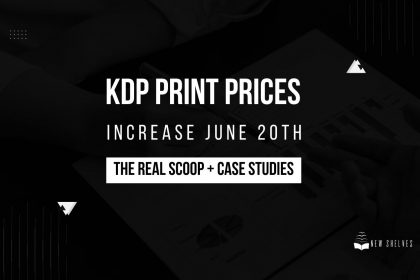
In 2018, the Alliance of Independent Authors (ALLi) projected blockchain technology as the next great “disruption” in the publishing industry, but was it just a short-lived fad?
In this post, I will remind you what blockchain is and where it came from, and we’ll consider blockchain features and milestones that may give it staying power.
Is Blockchain Alive and Well?
To start with, let’s zoom out–blockchain is the future. But, just like in the early days of the internet, blockchain still has a long way to go on its journey—and as for its future in publishing, some have concerns and still doubt it is the “great disrupter.”
But looking at the big picture, it seems evident—blockchain is here to stay. In 2020, Deloitte, a “Big Four” accounting firm, surveyed 1500 senior executives and found that the initial doubts about Blockchain’s usefulness are fading. They found that out of 1,000 companies in 7 countries, 34% already had a blockchain system in production, while another 41% planned to deploy blockchain applications in the coming year. Nearly 40% of those companies intended on investing $5 million in blockchain in the next 12 months.
What is Blockchain?
Simon-Pierre Marion, the CEO and founder of Scenarex, a Canadian company that builds blockchain solutions, compares blockchain to a big book or ledger created to store and record all the information from transactions. We live in a digital world, so we are talking about a database.
What sets this digital database apart? You cannot modify it—it cannot be tampered with or deleted. So if you record a transaction in a blockchain, it’s there forever. Each transaction is a link in the chain–thus a blockchain.
Cryptocurrency or bitcoins uses blockchain–it was the first application and is just one application. The guy who dreamed it up realized blockchain was the perfect technology to “bring his idea to life” and keep it secure. So he proposed a token representing the value of the ledger– cryptographic techniques hold it together in an unbroken chain of transaction blocks: blockchain.
The technology became known as DLT (Distributed Ledger Technology).
Many begin to realize the cool thing about DLTs is they could create applications for all kinds of things. This led to “Cambrian explosions of DLT’s, each built by competing groups of paid and unpaid ‘cypherpunks,’ and each different from the other in subtle ways that affected speed, transaction cost, utility, and so on. These tokens, aka digital assets (DAs), became tradeable and the value of the entire ‘crypto’ space was by the end of 2017 worth around 800 billion US dollars.”
But then blockchain hit stormy waters because of governments’ lack of regulatory clarity, among other things. As a result, many industry leaders lost interest because of the many unknowns and didn’t want to invest in this digital frontier.
But now, the regulatory brakes are coming off, and the horizon looks bright. Countries like Malta, Thailand, and others led the way in showing “regulatory agility” and passing laws, fostering innovation. In the United States, Wyoming passed the first significant regulatory laws that provided clarity to the industry. Other states are doing the same.
People are not excited to spend time and energy learning a new product, so “user interface and user experience work on blockchain products is arguable the most important work being done at the moment.” So during the years since 2018, the focus for blockchain industry insiders became building applications that function seamlessly. These decentralized applications (Dapps) are just applications built on the blockchain. Dapps are the “proof of concept regarding blockchain’s long-term impact on the industries. If the Dapp gains significant traction, it proves blockchain has significant staying power in the specific industry.”
The beauty of a great blockchain Dapp is that you probably won’t even know the blockchain powers it because it will just improve what you currently use. “Any solution that does succeed, then, will have to be streamlined enough to accommodate a traditionally non-techy user base.”
The major banks are now looking at blockchain because they realize blockchain is a very secure approach for doing financial transactions digitally. In addition, real estate, retail, estate planning, contract law, and publishing are industries where blockchain applications are changing up how information is stored and eliminating middlemen.
Why is Blockchain Perfect for Publishing?
Publishing, like much of the media industry, is struggling to redefine itself. But, unfortunately, the traditional distribution and revenue models are not cutting it, which is why authors and content creators are seeking new ways forward.
Blockchain accomplishes what the traditional publishers do in a less centralized way – “…managing copyright and licensing, distributing profits, and facilitating collaboration” – by using smart contracts and blockchain technology.
Simon-Pierre Marion suggests one of the upsides to Covid, if there are any, is now publishers who were not inclined to invest in the digital side of things are going there and exploring the options.
Be sure to see Part 2 of this article to learn more about Blockchain, it's part in a new world of publishing, and why some see it as the Great Disrupter.









[…] If you haven't read it already, you can find Part 1 of this article here. […]